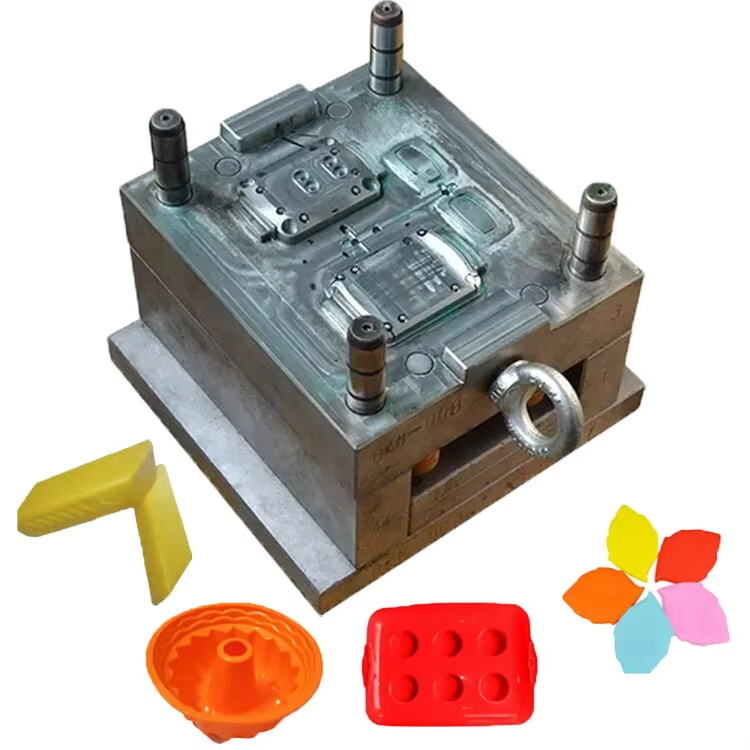Understanding the Importance of Material Selection in Injection Moulding
Material selection is a cornerstone in injection moulding, significantly affecting the final product's quality and performance. Different materials offer varying mechanical properties, such as durability, strength, and flexibility, which influence the product's capabilities. For instance, a study revealed that poor material choices account for over 70% of product failures in industrial settings, emphasizing the need for careful selection. Choosing the correct material enhances performance and ensures the product meets its intended use without premature failure or degradation.
Moreover, adhering to industry standards and regulatory compliance is paramount in material selection. Different sectors, like automotive and healthcare, impose specific regulations to ensure product safety and longevity. For example, materials used in automotive parts must comply with safety standards for crashworthiness, while those in healthcare must be biocompatible. Non-compliance with these regulations not only risks legal repercussions but can also lead to substantial financial losses due to product recalls or litigation. Therefore, a thorough understanding of both material properties and industry requirements is essential for successful injection moulding projects. This ensures that the products not only perform as expected but also stand the test of time in their respective environments.
Factors to Consider When Choosing the Right Material for Injection Moulding
Choosing the right material for injection moulding involves evaluating crucial mechanical properties such as strength and flexibility. These properties directly influence the product's durability and performance. For instance, materials like ABS are well-regarded for their impact resistance, which prolongs a product's lifespan. Each material should be assessed for tensile strength to ensure it meets the specific application requirements. This evaluation helps in making informed decisions about material suitability for different product demands.
Thermal properties are another vital consideration, especially heat resistance. The selected material must endure the processing temperatures during injection moulding and also perform reliably under actual use conditions. Polypropylene exemplifies a material with excellent thermal stability, making it particularly useful in automotive applications where heat resistance is paramount. This characteristic ensures that the material maintains integrity and performance, even in demanding environments.
Chemical resistance also plays a critical role in material selection, especially for injection moulding projects in the chemical industry. Materials need to withstand exposure to harsh substances without deteriorating. Therefore, testing for chemical resistance levels should be a mandatory part of the material selection process. This step is crucial to ensure the product's safety and longevity when exposed to aggressive environmental conditions or substances.
Additionally, balancing cost and availability with quality needs is essential in material selection. Although high-performance materials might come with a higher price tag, they can result in long-term savings by reducing the likelihood of product failure. Industry statistics suggest that investing 5-10% more on better-quality materials can lower product lifecycle costs by over 20%. This strategic investment can lead to improved product durability and customer satisfaction, making it financially viable in the long run.
Exploring Common Materials for Injection Moulding Projects
When it comes to injection moulding projects, thermoplastics like Acrylonitrile Butadiene Styrene (ABS), Polypropylene (PP), and Nylon are among the most popular choices due to their versatility and ease of processing. These materials can be recycled and re-moulded multiple times without significant degradation of quality, providing a sustainable option for manufacturers concerned with ecological impact. ABS, in particular, is prized for its strength and ability to create detailed products; it's often used in applications ranging from automotive parts to consumer electronics. Polypropylene, on the other hand, offers excellent chemical resistance and is prevalent in packaging and plastic containers. Nylon, known for its robust mechanical properties and high thermal stability, is suitable for products requiring durability.
Conversely, thermoset materials such as Epoxy and Bakelite are renowned for their durability and resistance to high temperatures and chemicals. These materials are typically selected for applications demanding exceptional performance and longevity, such as in the automotive industry or for electrical components. Thermosetting plastics harden permanently upon curing, providing resistance to heat and chemicals that thermoplastics cannot match. This makes them ideal for use in environments where sustained high temperatures or exposure to aggressive chemicals is expected, illustrating their importance in demanding industrial and engineering applications.
The Role of Environmental Impact in Material Selection
The environmental impact of materials is increasingly becoming a crucial factor in injection moulding selection processes. Eco-friendly materials, such as biodegradable thermoplastics and those made from recycled sources, are gaining popularity due to their ability to minimize environmental footprints. These alternatives offer significant reductions in emissions and waste, making them attractive for companies striving for sustainability and responsible production practices. Research indicates that switching to such materials can have a profoundly positive impact on reducing the overall carbon footprint of manufacturing operations.
Life Cycle Analysis (LCA) plays an essential role in evaluating the environmental performance of various materials. This comprehensive assessment examines a material's impact from production through disposal, providing crucial data for informed decision-making about material selection. LCA helps businesses choose materials that align with long-term sustainability goals, paving the way for more eco-friendly injection moulding projects. By integrating LCA findings into the decision-making process, companies can ensure they choose the most environmentally responsible options available for their products.
Frequently Asked Questions
Why is material selection crucial in injection moulding?
Material selection is crucial because it significantly impacts the product's quality, performance, and compliance with industry regulations, ensuring the product meets its intended use and longevity.
What are the main factors to consider when choosing materials for injection moulding?
The main factors include mechanical properties, thermal properties, chemical resistance, cost, and availability. Additionally, industry standards and environmental impact considerations are essential.
How does environmental impact affect material selection in injection moulding?
Environmental impact affects material selection by encouraging the use of eco-friendly and sustainable materials, which reduce emissions and waste, as well as align with long-term sustainability goals.

